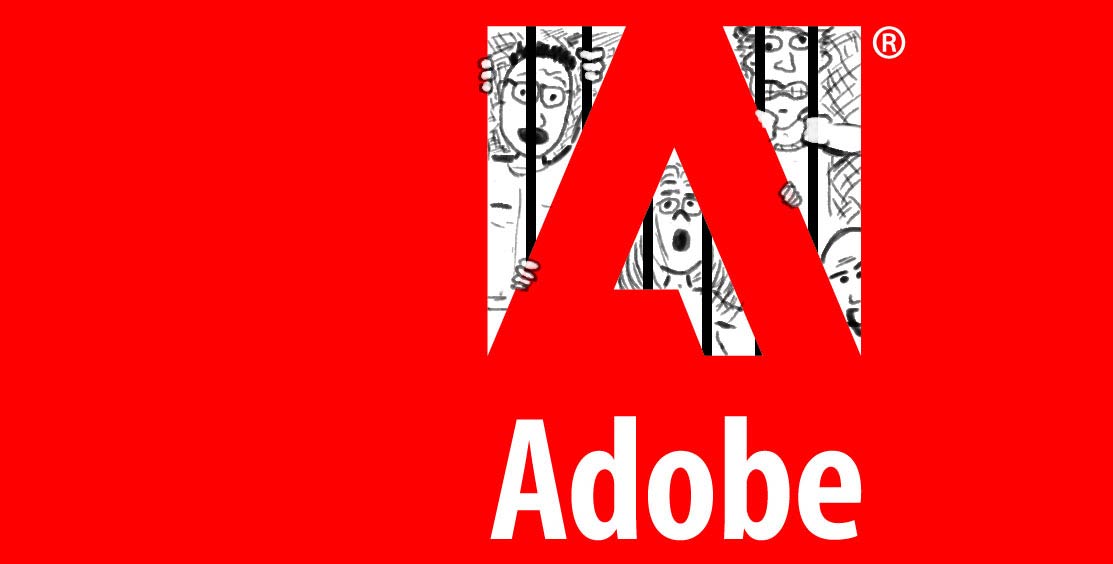On Monday, Adobe announced that the company would stop selling it’s traditional perpetual-licensed products after July 31th, 2013. Instead, users of all future versions of its products will be required to pay a monthly fee to rent the same programs from Adobe’s Creative Cloud.
That’s right, photographers. If you want to use future versions of Photoshop, you’ll be paying Adobe every month for the rest of your life. If you stop paying for a month, your software will cease functioning. Not only will you be unable to edit new photos, you’ll lose access to all of your own previous work that is stored in Adobe’s proprietary formats. Want to use Photoshop during your summer retreat to a cabin in the woods, or during your 6 month stay in the African jungle? Sorry. No internet access = no Photoshop for you.
Surprisingly, the photography community at large has put up very little protest. A Change.org petition against the adoption of the new product model has garnered only 4000 or so signatures over the past three days, a drop in the internet-age’s bucket. CNET’s Stephen Shankland and several other writers argue that Adobe is really not being very greedy, as though that were the only issue. Shankland claims that over a three year period, the typical product life of an Adobe CS version, it is less expensive to rent the “Creative Cloud” than pay for the comparable “Master Suite” of products, and on that point he is correct.
But let’s look at this from the point of view of a simple web designer, who doesn’t need Illustrator, Photoshop, After Effects, Premiere, and the plethora of products that remain in the “Master Suite” . A web-designer who just wanted to use Dreamweaver to help speed up his or her workflow would be losing big under the new system. Currently, I can buy Dreamweaver CS6 for $380. If I were to rent the Complete Creative Cloud over the next three years, the price would be $1800, which would be insanity. But Adobe also offers single-product licenses through the cloud, at $19.99 a month, so over the same three years, Dreamweaver would cost $720, still nearly double the current price. And this, of course, is assuming that we have any desire to upgrade to the next version after 3 years. If we’re happy sticking with a familiar version for 4 or 5 years, the Cloud versions represent an even greater loss.
But what about photographers? Most of us use Adobe Photoshop and Lightroom. My understanding is that Lightroom will remain outside of the “Creative Cloud”, as it is currently not part of any of the Creative Suites, which is a little bit of good news (though it is also available as part of the Creative Cloud).
So let’s consider Photoshop by itself. Currently, Photoshop CS6 costs about $625. Rented as a single product from the Creative Cloud, the same program would cost about $720; a significant increase. But as many readers know from their own experience, a sizeable portion of photographers do not upgrade to the latest version of Photoshop unless there is a compelling reason to do so; the program is already deeper and more complex than most will ever use. Consequently, most of us will be losing not just the obvious $95, but also the hundreds of dollars for every year they’d have decided not to upgrade. That is a choice that Adobe doesn’t want the individual to have.
Perhaps more sinister than that is the ease with which Adobe will be able to increase profits. Under the current system, If Adobe wanted to raise the price of Photoshop an extra $100, they’d face public outrage at the very least; they’d likely feel the effects by many photographers waiting longer between upgrades, and they’d potentially lose money. Under the new system, Adobe avoids both risks. Since the software costs are spread out over a few years, small price increases would not just be easily accepted, they’d be expected. Yet a $3 increase in the monthly fee still adds up to over $100 in three years. Don’t like the increase? You’ll no longer be able to off-set it by waiting longer to upgrade… your monthly fee is mandatory if you want to keep working.
Even artists and publishers who use the current “Design Suite Standard”, a combination of InDesign, Photoshop, Illustrator, and Acrobat X, will be losing money when switching to the new Cloud system… about $600 over three years.
So, who will benefit from Adobe’s new system? Probably those who need it the least. Their current big spenders will get a price break. Those big firms who would have been spending $2200 – 2600 on the Adobe CS6 Master Collection will now only have to pay $1800.
But even there, the situation is not as clear as it first seems. Those companies who already own the Master Collection can currently upgrade to the next version for far less than it costs to buy the new version. As CNET user Allen_Wentz explained:
“Master Collection owners like me are also scr*wed. It will cost me $743 to upgrade my Master Collection to CS6 from CS5. 18 months of CC would be $50 x 18 = $900 I think. So even compared to buying every perpetual upgrade CC costs more.
But in reality it is worse than that by a lot because I do not buy every upgrade I buy every other upgrade. That means ~$800-$1200 every three years but Adobe will under CC force me to pay $1800 every 3 years.“
It is becoming increasingly clear why Adobe attempted to change it’s upgrade rules with the introduction of CS6, blocking all users from upgrade pricing unless they had purchased the most recent version, a decision that even had National Association of Photoshop Professionals (NAPP) president Scott Kelby up in arms.
So, who really stands to gain from this new schema? Adobe Systems, Inc.




